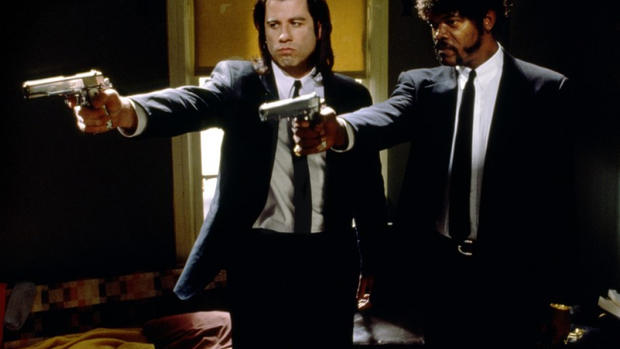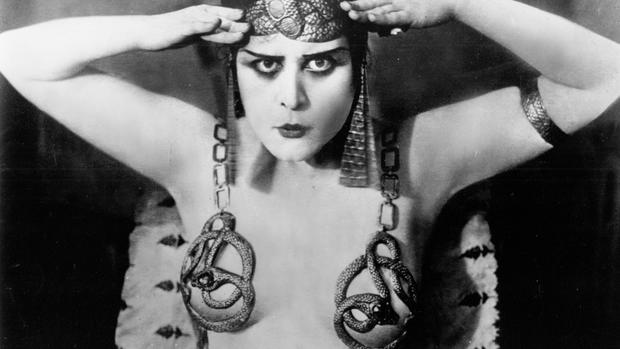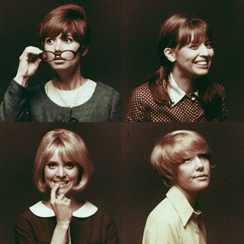Preserving our nation's film heritage
We're taking a peek inside a time capsule full of our country's best-loved movie memories. Martha Teichner leads the way:
The vaults look like they're straight out of some sinister, surreal movie. Monsters lurk behind these locked doors -- like the original camera negative of "Frankenstein," from 1931, starring Boris Karloff -- and treasures.
Greg Lukow, who heads the Library of Congress' National Audio-Visual Conservation Center in Culpeper, Va., showed Teichner an untitled, experimental short (which they've dubbed "Newark Athlete"), which was made by Thomas Edison's studio in 1891. "It may be the oldest piece of celluloid rolled motion picture film in the world," he said.
"Newark Athlete" was added to the National Film Registry in 2010. The Registry is a compendium of films deemed historically, culturally or aesthetically important enough to preserve for future generations. Films are nominated for the Registry by film professionals, scholars, and the public.
This year's additions will bring the list to 650 -- a tiny, tiny fraction of the collection the Library of Congress stores here. The largest anywhere, its collection has 1.4 million films, TV and video recordings.
If this place suggests a secret, Cold War bunker, that's exactly what it used to be.
"It was a nuclear bomb-proof underground bunker that was a part of the U.S. Federal Reserve Bank system," said Lukow. It was where billions of dollars of coins and currency was stored for use after a nuclear attack -- "just sat there for 25 years, between 1968 and 1993, for the purpose of re-pumping the economy."
At the end of the Cold War, the bunker was decommissioned. In 1997, philanthropist David Woodley Packard bought the facility, transformed it, and then gave it to the Library of Congress.
Every year the Library of Congress adds another 25 titles to the National Film Registry. But a film has to exist to be eligible for inclusion.
Seventy percent of the 11,000 or so silent films made in the United States have been lost. The ones that survive are often incomplete, and in terrible shape.
Until 1951, most motion picture film was made of nitrate, which had a tendency to decay, catch fire, or even explode if not cared for properly.
Film archivist George Willeman showed Teichner a roll of film which had been kept someplace "very, very wet, and it has become what we call a hockey puck."
Another film reel showed signs of "honey drops" -- "The base is deteriorating and squeezing up through the winds of the film," said Willeman. "This one still has a little bit of image on it, so there is something there we can try to save."
Saving our cinematic heritage is a big part of what the Library of Congress does at its Packard Campus in Culpeper. In its lab, technicians can take the faintest of images and, by using state-of-the-art photographic techniques, actually make brand new negatives and prints.
Liz Stanley's job is to inspect and restore old films. She's working on a 1912 short called "The Skeleton." It has broken sprocket holes she's got to fix, by taping and making new perforations.
Tecihner asked, "Is this place loaded with film geeks?"
"Oh yeah," Stanley laughed. "Like, you know, the AV Club in high school? This is where they work, this is where they ended up!"
And speaking of film geeks, they come from all over the world for the Library's "Mostly Lost" conferences to play detective.
Unidentified fragments of films are shown; participants try to spot clues on the screen that might help the Library figure out what the films are.
"It could be 1912," said one man.
"It's set in Alaska!" said another.
If the past is a mystery, here the present and future will not be, thanks to technology.
Twenty-four hours a day, radio, television and Internet content is being captured live, in real time, and being saved. Decades of TV shows, video games, even YouTube posts are being digitized and archived. So much data, it's being stored by the petabyte. [One petabyte is like more than 13 years of HDTV video.]
The archive includes everything from "Dallas" to the '70s porn film, "Debbie Does Dallas."
"We want to be able to preserve all of it," said Mike Mashon, who heads the Moving Image section, "because we figure it's for future generations to be able to decide what's important and what's not.
"So we have lots of television commercials in our collection, and I'm really glad that we do, because it is such a wonderful resource that we have to talk about the changing evolution of a lot of things that we've gone through in our culture."
For example, attitudes toward women, as seen in an Eastern Airlines ad from 1970 (left).
In it, an unseen male casually dismisses women for not meeting the beauty standards of the airline's stewardesses. Too short. Wears glasses. Awkward. Not very friendly. She bites nails. Oh, she's married...
"They're probably good enough to get a job anywhere they want," the narrator says helpfully -- but not, he assures us, at Eastern.
Also in the collection: A copy of a "CBS Evening News With Walter Cronkite" broadcast from November 8, 1977, which featured Teichner's very first story for the network.
Teichner interviewed survivors of a collapsed dam which killed 38 people at a religious college in Toccoa Falls, Ga. "It was, like, nine days after my first day of work," she said.
The Library of Congress' National Audio-Visual Conservation Center adds as many as 150,000 items to its collection every year. Its annual budget: $15 million -- a bargain for the American people, according to Greg Lukow.
"It's a window into the hearts and minds and even the soul of the American people," Lukow explained to Teichner. "It shows the best of us. It shows the worst of us. Can you imagine our understanding of ourselves without it?"
The Library of Congress is scheduled to announce its 2014 additions to the National Film Registry on Wednesday, December 17.
For more info:
- National Film Registry (loc.gov); Complete listing
- How to nominate films for the Registry
- National Audio-Visual Conservation Center, at the Library of Congress' Packard Campus, Culpeper, Va.
- Follow the @LibraryCongress on Twitter and Facebook
- 2014 "Mostly Lost" Conference, Culpeper, Va.




